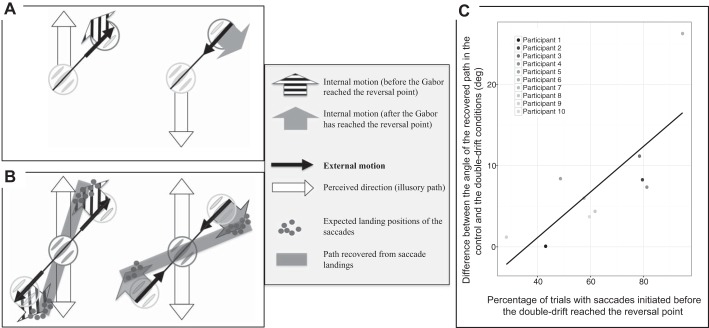Fig. 7.
A: illustration of the direction of the internal motion as a function of the external motion of the Gabor. Before the Gabor reached the reversal point (left), the internal motion is in direction of the perceived path, i.e., in direction of the illusion. To the contrary, after the Gabor has reached the reversal point (right), the internal motion is in the opposite direction, i.e., away from the illusory path. B: illustration of the bias that occurred in our experiment. Depending on when the saccades were initiated (before or after the Gabor has reached the reversal point; left and right, respectively), the internal motion was in 2 possible directions. Saccade landings (gray points) were thus shifted in direction of the internal motion. This affects in turn the orientation of the path recovered from saccade landings. In our experiment, as participants initiated more often their saccades before the Gabor reached the reversal point (left), it biased the orientation toward the perceived path when triggering saccades only before the upper and lower end points. C: scatter plot representing the difference between the angle of the recovered path in the control and the double-drift conditions as a function of the percentage of trials with saccades initiated before the double-drift reached the reversal point in the visually guided saccades condition. Each dot corresponds to 1 participant. The black line corresponds to the regression line.

